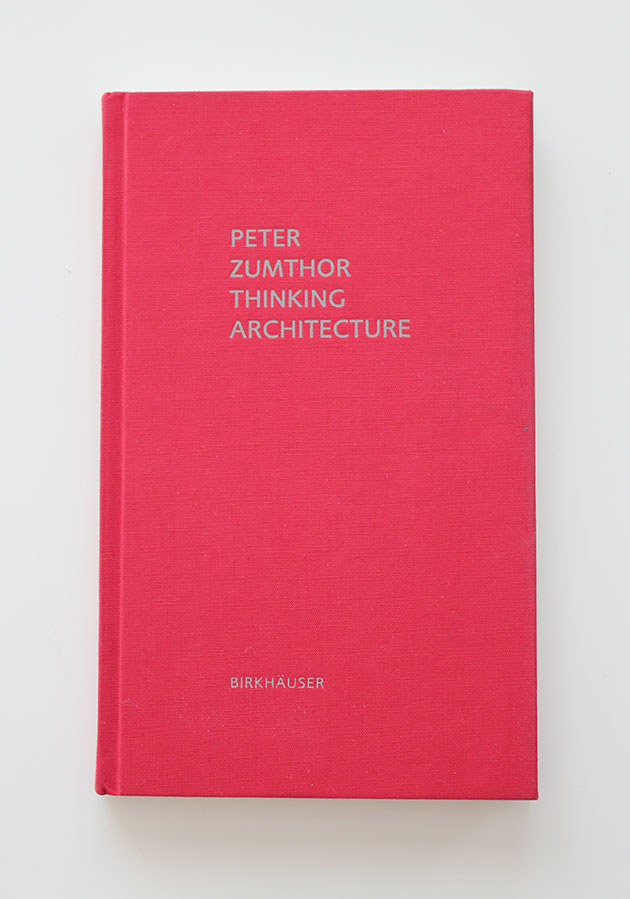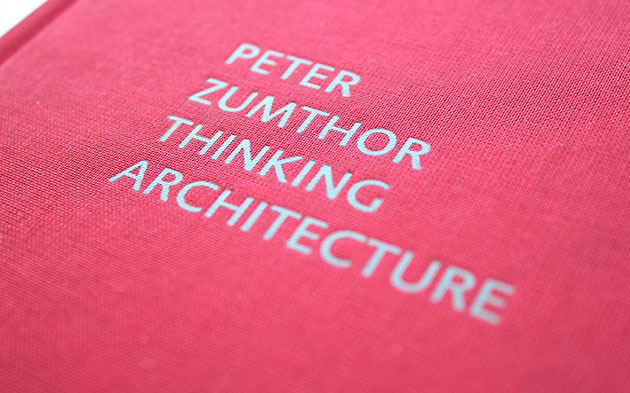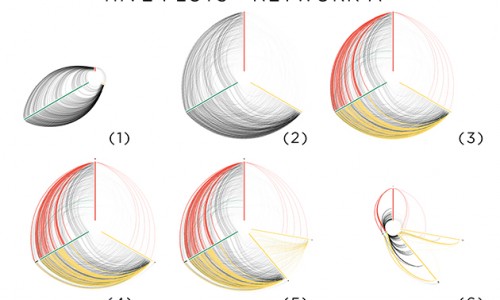“As people move about the environment, they acquire knowledge about patterns of their own movement and about spatial relations among places in the world. This knowledge is encoded and stored in memory, allowing people to find the places again…”
Human Spatial Memory: Remembering Where
“Architecture is exposed to life. If its body is sensitive enough, it can assume a quality that bears witness to the reality of past life.”
Thinking Architecture, Peter Zumthor
On one hand, Peter Zumthor’s Thinking Architecture is a collection of lectures and essays, written between 1988 and 2009. On the other hand, it is a collection of spatial impressions; absorbed moods and design approaches. It is also a book about the presence; the absence and about the act of remembering and observing as a device for triggering human emotions. Zumthor writes books in the same way he designs buildings: by creating a highly atmospheric experiences. Thinking Architecture seems to instill the same combination of firmness and delicacy that emanates from Zumthor’s architecture. The titles themselves seem to generate a sence of subtle spatial experience: “Shadowless Modernism“; “Chinks in sealed objects“; ” For the silence of sleep“; ” The Body of Architecture” …
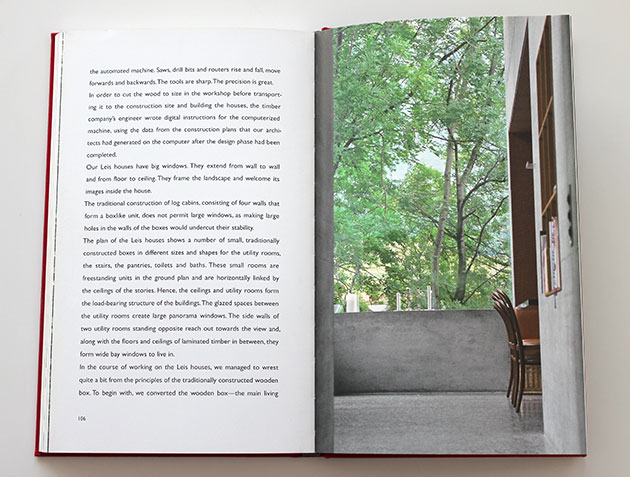
This third, expanded edition includes two new essays: “Architecture and Landscape” and “The Leis Houses” (which, it turns out, are available for visitors to rent as vacation houses). The book also includes photographs of Peter Zumthor’s residence and an amazing textile hardcover with a certain “quality without a name” that reminds the covers of old volumes of World’s Classics.
Scroll down to see some of our favorite quotes:

“Producing inner images is a natural process common to everyone. It is part of thinking. Associative, wild, free, ordered, and systematic thinking in images, in architectural, spatial, colorful, and sensuos pictures- this is my favorite definition of design.”
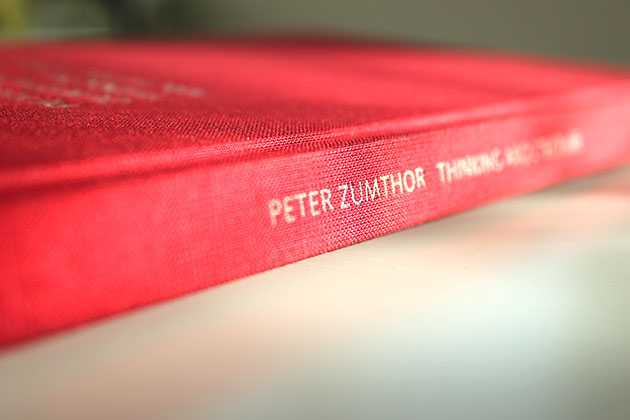
“The building, city, house, or street seems consciously placed. It generates a place. Where it stands, there is a back and a front, there is a left and a right, there is closeness and distance, an inside and outside, there are forms that focus and condense or modify the landscape. The result is an environment.”
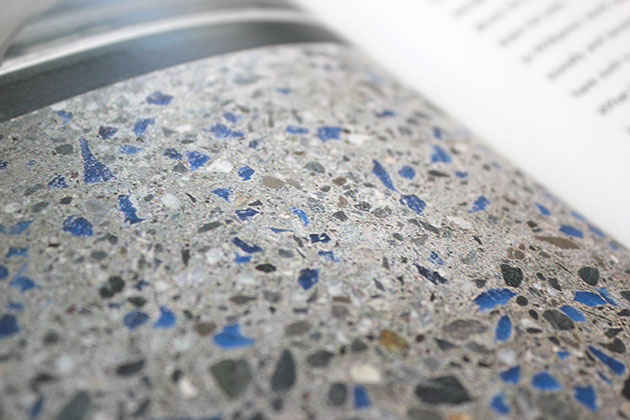
“Sometimes I can almost feel a particular door handle in my hand, a piece of metal shaped like the back of a spoon.”
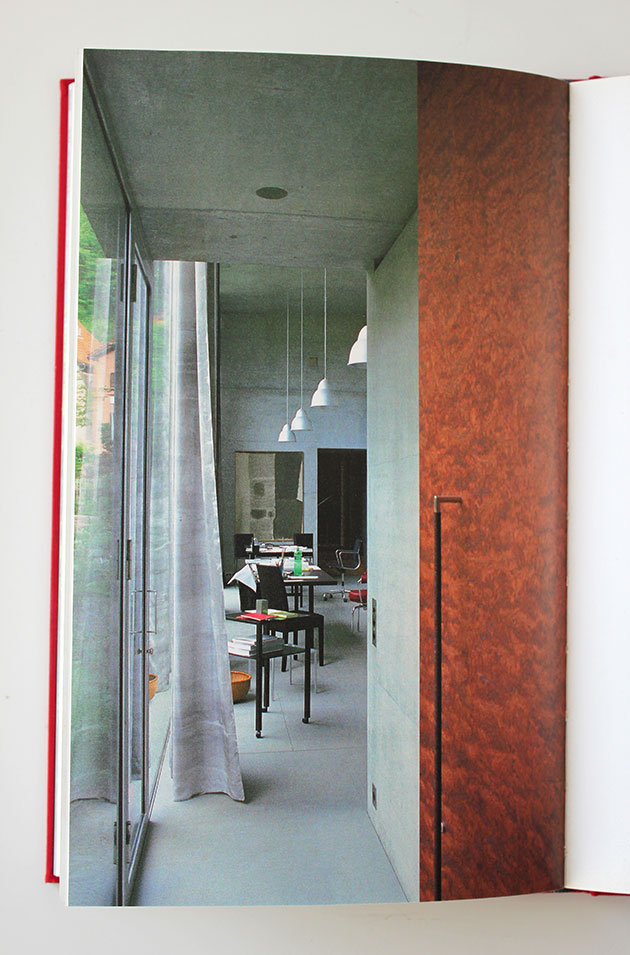
Contemporary architecture should be just as radical as contemporary music. But there are limits. Although a work of architecture based on disharmony and fragmentation, on broken rhythms, clustering and structural disruptions may be able to convey a message, as soon as we understand its statement our curiosity dies, and all that is left is the question of the building’s practical usefulness.
Architecture has its own realm. It has a special physical relationship with life. I do not think of it primarily as either a message or a symbol, but as an evelope and background for life which goes on in and around it, a sensitive container for the rhythm of footsteps on the floor, for the concetration of work, for the silence of sleep.”


